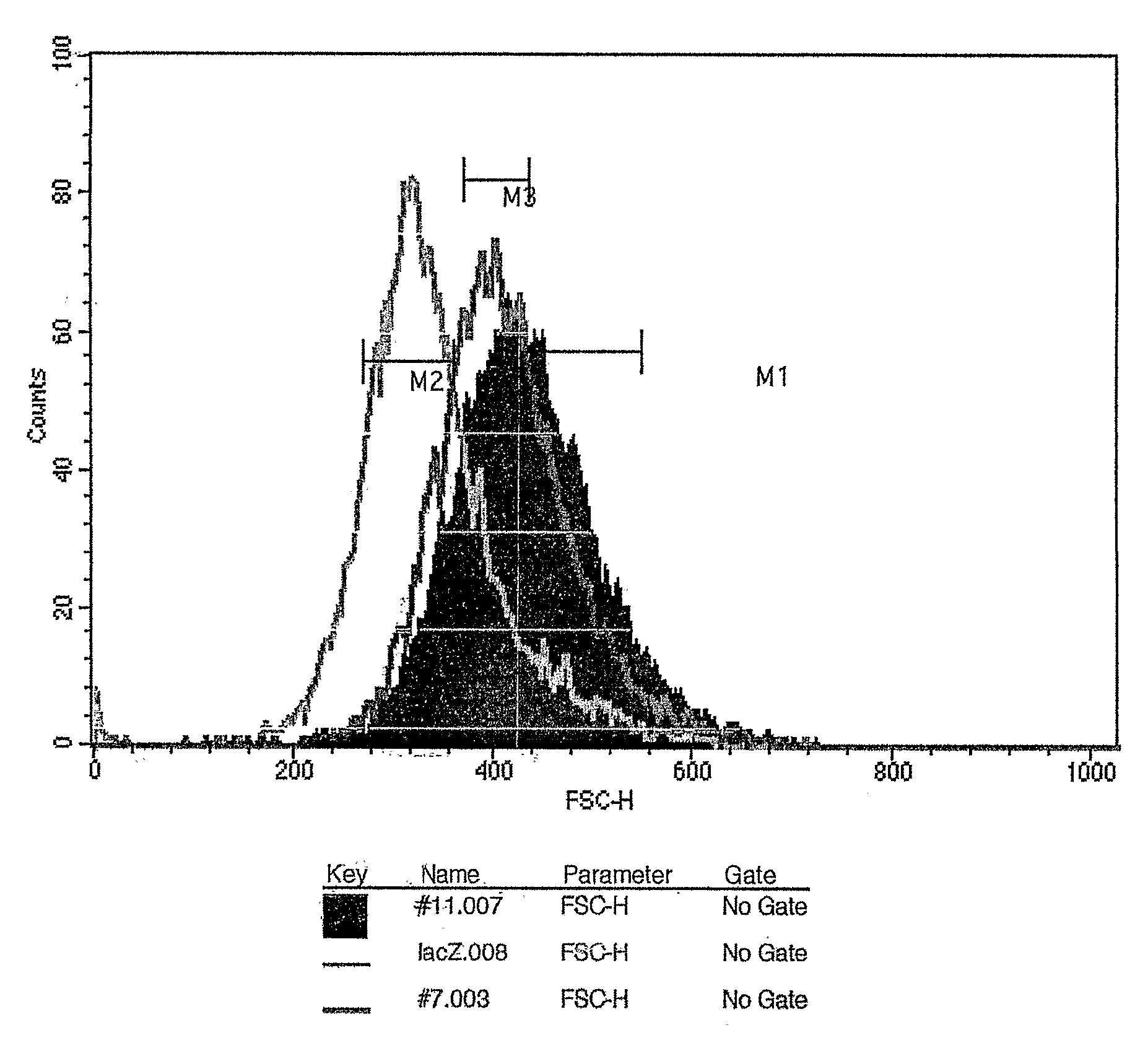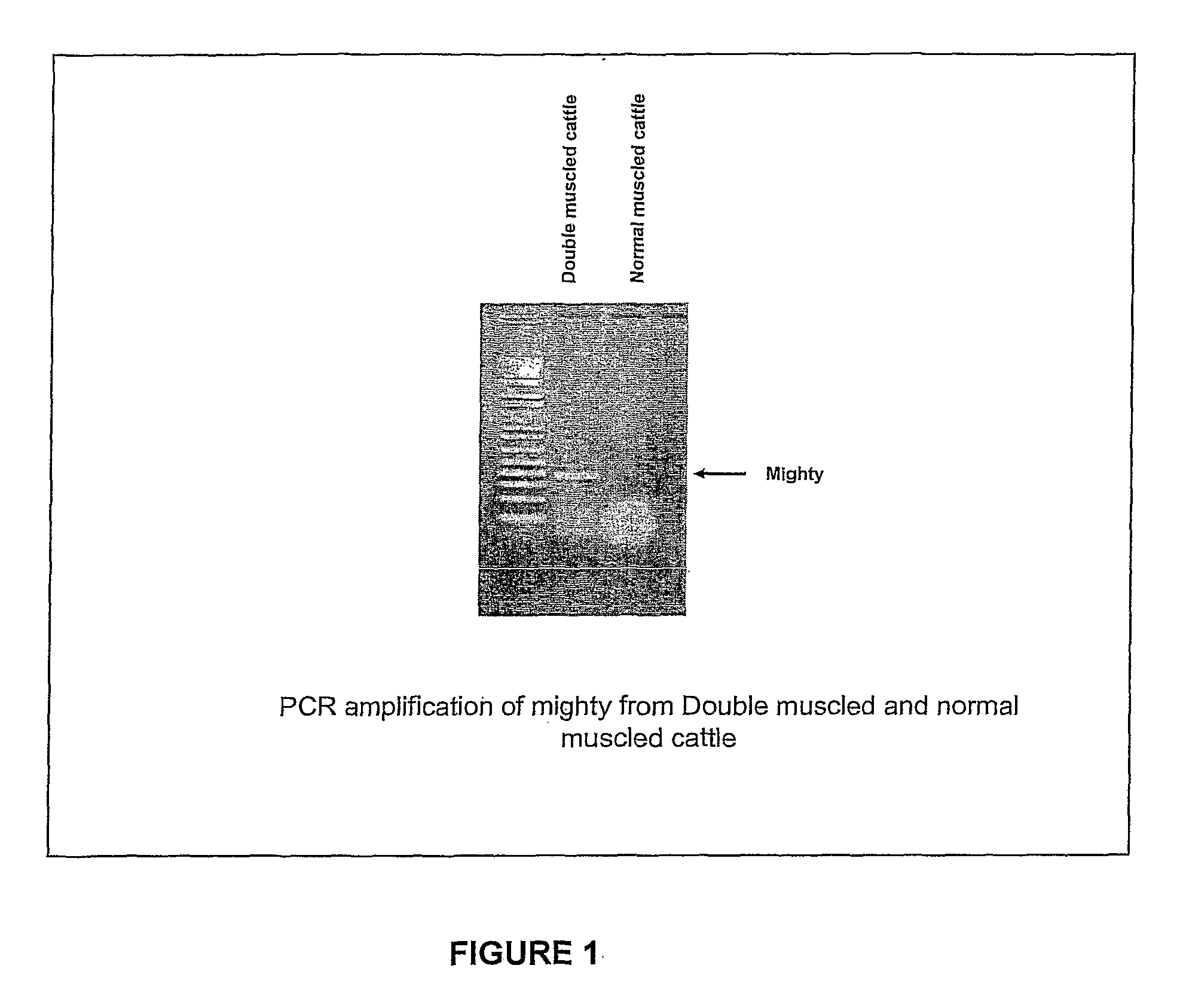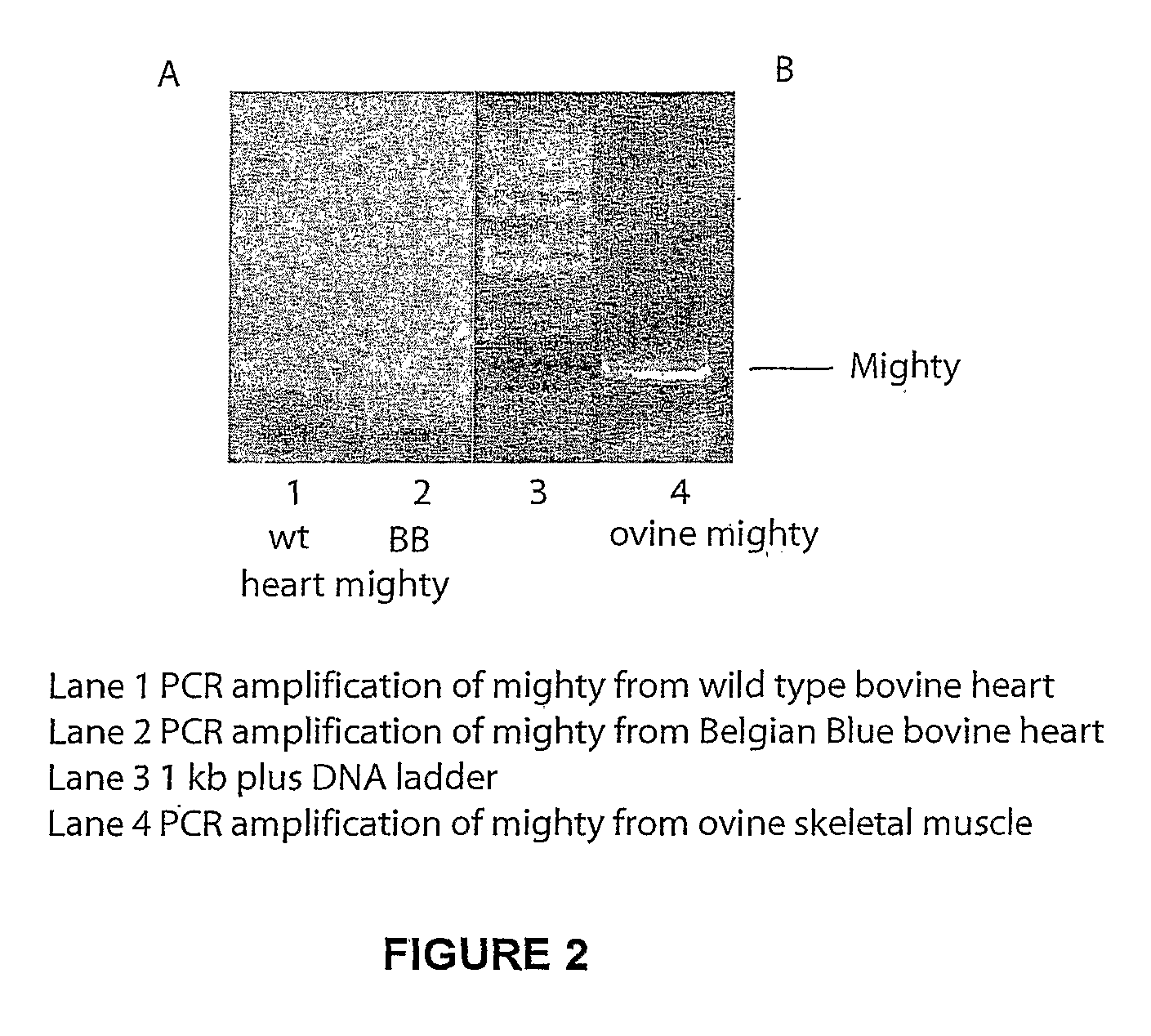Novel Muscle Growth Regulator
a growth regulator and muscle technology, applied in the field of new protein, can solve the problems of less supportive environment of muscle satellite cell activation, proliferation and differentiation, in the direction of antivirals, peptide/protein ingredients, etc., and achieve the effect of increasing muscle mass and treating or prophylaxis of diseases
- Summary
- Abstract
- Description
- Claims
- Application Information
AI Technical Summary
Benefits of technology
Problems solved by technology
Method used
Image
Examples
example 1
Isolation of Mighty cDNA
[0144] RNA Purification: RNA was purified from ovine and bovine skeletal muscle and heart tissue samples using TRIZOL (Invitrogen) according to the manufacturer's protocol.
[0145] Amplification of the mighty cDNA: Amplification of mighty cDNA was carried out in a combined reverse transcription PCR. First strand cDNA was synthesized in a 20 μl reverse transcription reaction mixture from 5 μg of total RNA, using a Superscript preamplification kit (Invitrogen) according to the manufacturer's instructions. The PCR conditions and the specific primers used for the amplification are as follows:
[0146] Amplification of sheep and cattle skeletal muscle mighty cDNA and bovine heart mighty cDNA was performed using the primers:
Forward primer5′ CACCATGGCGTGCGGGGCGACACTG 3′(SEQ ID No. 6)Reverse primer5′ GGATACATAGCTTGTTGGCCT 3′(SEQ ID No. 7)
[0147] The PCR was carried out in the presence of Q solution (Qiagen) with initial denaturation at 94° C. for 1 min. Subsequently 3...
example 2
Cloning of Mighty cDNA
[0152] The purified cDNA was ligated in to pGEM-T easy vector according to the manufacturer's protocol (Promega). The ligation reaction was transformed into competent E. coli DH 5 alpha bacteria (Invitrogen) according to the manufacturer's protocol. The transformed bacteria were plated on Lennox L broth (LB) agar plates containing ampicillin (50 mg / litre), IPTG and X-gal. The white colonies were seeded in LB plus ampicillin media and the cultures grown overnight. The plasmid DNA was purified from the cultures using Qiagen mini plasmid kit (Qiagen). The plasmid DNA was digested with the restriction enzyme EcoRI, and analysed on an agarose gel. The positive clones were identified by the presence of the right size fragments. The positive clones were sent for sequencing for further confirmation. The ovine mighty polynucleotide sequence is provided in SEQ ID No. 1, and the corresponding polypeptide sequence is provided in SEQ ID No. 2. The bovine mighty polynucleot...
example 3
Generation of Murine Mighty Stable Cell Lines
[0153] The ORF of murine mighty was PCR amplified with the following primers:
Fwd5′ CACCATGGCGTGCGGGGCGACACTG 3′(SEQ ID No. 6)Rev5′ GGATACATAGCTTGTTGGCCT 3′(SEQ ID No. 7)
[0154] The Pwo polymerase (Roche), Q solution (Qiagen), and mouse EST clone (Resgene) as the template, were used for the PCR reaction according to the manufacturer's recommendations. The PCR conditions were as follows: 35 cycles of 94° C. for 20 s, 60° C. for 30 s, 72° C. for 1 min and one cycle of 72° C. for 5 min.
[0155] The cDNA of the mouse mighty gene was purified through the Wizard PCR preparations
[0156] DNA purification system (Promega) and was cloned into the TOPO site of the pcDNA3.1 D / V5HisTOPO vector (Invitrogen) as per manufacturer's protocol. The recombinants were analysed by restriction digestion and the positive recombinant was sequenced.
[0157] For the stable transfection of C2C12 myoblasts with the mouse mighty construct, C2C12 myoblasts (1×107) were w...
PUM
| Property | Measurement | Unit |
|---|---|---|
| Fraction | aaaaa | aaaaa |
| Mass | aaaaa | aaaaa |
| Gene expression profile | aaaaa | aaaaa |
Abstract
Description
Claims
Application Information
 Login to View More
Login to View More - R&D Engineer
- R&D Manager
- IP Professional
- Industry Leading Data Capabilities
- Powerful AI technology
- Patent DNA Extraction
Browse by: Latest US Patents, China's latest patents, Technical Efficacy Thesaurus, Application Domain, Technology Topic, Popular Technical Reports.
© 2024 PatSnap. All rights reserved.Legal|Privacy policy|Modern Slavery Act Transparency Statement|Sitemap|About US| Contact US: help@patsnap.com










